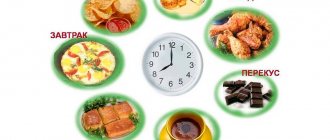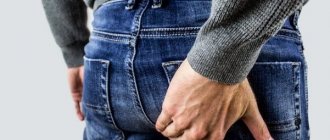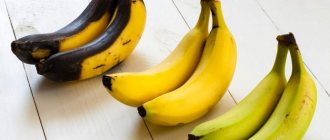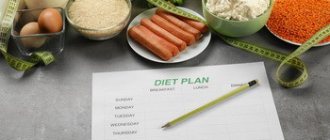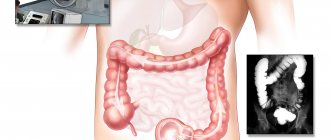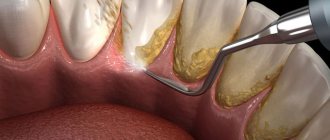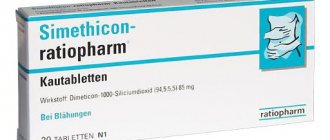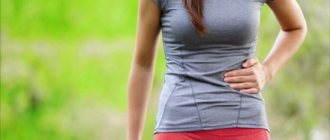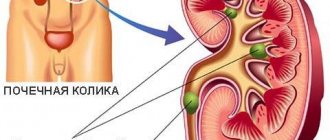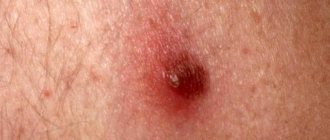The fight against diseases of the digestive system involves a combination of drug therapy with a certain diet. This diet is diet table No. 4 - one of the most popular diets among all Pevzner diets when it comes to gastrointestinal diseases in the acute stage, accompanied by diarrhea.
A certain diet in such cases helps to normalize the processes occurring in the digestive organs and restore their function.
Read also:
5 dietary foods that make us gain weight
Diet Features 4
Its use is recommended in the following cases:
- Acute and chronic colitis;
- Enterocolitis;
- Acute gastroenterocolitis in the initial stages;
- Intestinal tuberculosis;
- Typhoid fever;
- Dysentery.
Thanks to table No. 4, it is possible to achieve the following goals:
- Reduction of putrefactive and fermentative processes occurring in the intestines;
- Elimination of the inflammatory process in the digestive organs, restoration of their function;
- Providing nutrition that will allow the gastrointestinal tract to operate at minimum load;
- Saturation of the body with useful substances, but reducing the amount of carbohydrates and fats consumed;
- Providing the diet with food that does not provoke mechanical and thermal irritation of the digestive system.
General power characteristics
The specific fourth diet involves reducing the amount of fat and carbohydrate foods in the diet. This is carried out with the aim of reducing secretion and fermentation processes in the intestines, providing optimal conditions for restoring the condition and functioning of the mucosa.
The diet should not contain sweets, legumes, sources of coarse fiber, hot and sour sauces, and dairy products. That is, everything that stimulates the secretion of juices, requires a large amount of enzymes for digestion, and irritates the intestinal walls through mechanical action. This happens when fiber swells and gases are released during fermentation.
The preferred types of food processing are steaming and boiling. Food should be ground to a liquid, puree-like state, which will ensure its fastest and most complete absorption. It will also prevent the passage of undigested food particles into the intestines. Contraindications to the diet include stimulants of bile secretion - acidic foods, vegetable fats.
Chemical composition of the daily diet for medical diet No. 4:
- vegetable protein - 35 g;
- animal protein - 65 g;
- vegetable fat - 25 g;
- animal fat - 45 g;
- carbohydrates - 250 g;
- salt - 6-8 g.
The recommended calorie intake for an adult is 2000 kcal. The energy value of products per day can be reduced in accordance with the age, health status and energy needs of the patient. It is important to maintain the proportions of proteins, fats and carbohydrates (BJU). A special diet for bedridden patients, elderly patients and children must be agreed with a doctor.
If you follow a special nutrition plan, meals with small portions are preferable. A split diet is recommended - up to six times a day. You need to eat strictly at the same time. At the same time, it is important to drink the required minimum of water - 1.5 liters - to avoid dehydration and concentration of digestive juices.
The principle of operation of diet table No. 4 is a sharp reduction in the load on the intestinal walls to ensure their intensive recovery in a few days. After following the diet, they move to the second table or a specialized version of the fourth.
Basic rules for using diet 4
It is important to know about this diet:
- The maximum daily energy value of the menu is 2050 kcal;
- The daily diet should contain a maximum of 70 g of fat, 100 g of protein, 250 g of carbohydrates;
- You must consume at least 1.5 liters of free liquid per day;
- The food consumed should be warm, steamed or boiled. You need to take food either grated or pureed;
- Diet 4 involves eating 5-6 times a day in small portions;
- As part of the use of this nutritional system, bed rest plays an important role.
Diets for weight loss
Therapeutic diets
Published by Vika Kulik on May 21, 2015 June 25, 2015
In this article I will write a detailed menu for the popular 4b diet, which is prescribed for various diseases of the gastrointestinal tract, as well as a list of permitted and prohibited foods, diet features and menu.
- Efficiency
- Diet features
- What can you eat?
- Menu for week 4b diet
This diet is often prescribed to people who have problems with the gastrointestinal tract, for example, chronic colitis or their exacerbations, during gastrectomy of the stomach, as well as other diseases accompanied by stomach pain and diarrhea.
Efficiency
Diet number 4b is designed to reduce stomach pain in a few days, as well as ensure easy work for the intestines. In a short time, the diet improves digestion by eating certain foods prepared in a special way, improves your overall health, reduces intestinal inflammation, and also restores its function. (By the way, a hypocholesterolemic diet also improves the health of the body).
Within a couple of days after starting the diet, you will notice improvements.
You can use the diet without a doctor’s prescription if you are experiencing problems with the gastrointestinal tract, and also want to improve your body’s health and lose a few extra pounds.
Diet features
The diet for gastrectomy 4b primarily involves split meals. You should eat 5-6 times a day. Meal times might look like this:
- Breakfast – 8:30
- Second breakfast: 11:00
- Lunch: 13:30
- Afternoon snack: 16:00
- Dinner: 19:00
- Before bed: 22:30
The Pevzner diet involves the consumption of mucous soups and other liquid dishes, boiled and mashed stews, and liquid porridges. Food can only be boiled or steamed. During the diet period prescribed by the gastroenterologist, it is important to avoid eating too hot or too cold food. Even in hot weather, you should not take a few sips of cold water. If possible, food should be kept close to room temperature.
What can you eat?
Flour products.
Crackers, dark bread, butter cookies, and sponge cakes work well. Occasionally, you can add homemade baked goods to your diet: manna or biscuit.
Poultry and meat.
You can only eat low-fat varieties, for example, chicken, veal, beef, turkey, rabbit. As mentioned above, food should be either steamed or boiled. Poultry must be eaten without skin!
Fish.
You can eat low-fat fish, boiled or steamed.
Soups.
Soups with weak broth, as well as with pureed meat products, noodles and vegetables are allowed.
Cereals.
As mentioned above, only pureed liquid porridges from the following cereals are allowed: oatmeal, buckwheat, semolina, rice.
Eggs.
No more than two pieces per day are allowed. The eggs should be “in a bag” or in the form of a steam omelet.
Dairy products.
You can use low-fat cream, milk and sour cream, but “not in direct form,” that is, you can only add it to dishes. Low-fat cottage cheese, acidophilus and kefir are well suited for such a diet.
Sweet dishes or desserts.
Sweet fruits (without skin) and berries are allowed up to 100 grams per day, if well tolerated. For sweets, you can have marshmallows, marshmallows, jams and preserves. For dessert, it is good to eat jelly and jelly (homemade from non-acidic berries). Homemade baked goods include sponge cake and semolina.
Vegetables.
Carrots and potatoes work well - boiled and always pureed. You can also have some boiled zucchini and pumpkin. If tolerated well, you can eat tomatoes (also up to 100 grams per day). You can use tomato juice prepared at home.
Spices.
It is good to add fresh herbs to dishes, namely: dill, parsley, bay leaf. Sauces like mayonnaise and ketchup are not allowed, but you can make your own Bechamel sauce. You can add cinnamon and vanillin to baked goods and some dishes.
Beverages.
You are allowed to drink compotes of non-acidic berries, fresh jelly (homemade), tea, coffee, as well as cocoa (preferably with water); you can drink the following juices: strawberry, orange, cherry and tangerine, but with the addition of water in a 1:1 ratio.
All other products not listed above are prohibited.
Menu for week 4b diet
The first day
- Breakfast: a cup of tea, a couple of eggs, a few crackers
- Second breakfast: a glass of kefir + a few marshmallows
- Lunch: a serving of soup
- Afternoon snack: a few fruits
- Dinner: steamed fish + buckwheat
Second day
- Breakfast: coffee and a couple of cheese toasters
- Second breakfast: several berries
- Lunch: soup
- Afternoon snack: tea and several sandwiches with butter and cheese
- Dinner: boiled chicken fillet and rice
Day three
- Breakfast: oatmeal
- Second breakfast: 1 banana and 1 apple
- Lunch: a couple of steamed meat or fish cutlets and tea
- Afternoon snack: fruit salad
- Dinner: a serving of soup
Day four
- Breakfast: rice porridge
- Second breakfast: baked apples
- Lunch: steamed fish and boiled potatoes
- Afternoon snack: a glass of kefir + marshmallows
- Dinner: soup
Day five
- Breakfast: semolina porridge
- Second breakfast: a glass of jelly
- Lunch: a portion of boiled beef and some rice
- Afternoon snack: jelly
- Dinner: cottage cheese
Day six
- Breakfast: buckwheat porridge with milk
- Second breakfast: juice and a few butter cookies
- Lunch: soup
- Afternoon snack: tea and a couple of pieces of manna
- Dinner: steam omelette
Day seven
- Breakfast: oatmeal
- Second breakfast: tea and a few pieces of biscuit
- Lunch: buckwheat and steamed veal
- Afternoon snack: a glass of kefir
- Dinner: mashed potatoes and boiled meat
Every day before bed (half an hour before) we drink 1 glass of kefir as a meal.
Table 4b diet for a week or for several weeks will help you get rid of pain, as well as make your gastrointestinal tract strong and healthy. Try this diet to feel better!
Table number 4: permitted products
Compose your daily diet using the following products:
- Crackers made from wheat bread. They shouldn't be too crispy;
- Soups, broths prepared with lean fish or meat. You can add mucous cereal decoctions and pureed lean meat to them;
- Fresh mashed cottage cheese, preferably unleavened;
- Lean meat, including veal, deveined beef;
- Poultry meat - turkey, chicken - without skins;
- Eggs, boiled soft-boiled or in the form of a steamed omelet;
- Puree porridge – buckwheat, oatmeal, rice;
- Vegetables. They can only be used for preparing broths;
- You can add butter to prepared dishes in small quantities;
- Raw apples (mashed). You can make jelly from pears, quince, dogwood, and blueberries;
- You can make freshly squeezed juices from fruits and berries. You should not drink juices from apricots or grapes;
- Decoctions prepared from quince, bird cherry, black currant, rose hips;
- Cocoa prepared with water, tea (preferably green), black coffee.
Menu for the week
When planning your menu for the week, consider these recommendations and count calories. An approximate weekly menu and recipes may look like this.
The first day
For breakfast we prepare:
- rice porridge on water with cutlet
- and wash it down with tea.
For the 2nd breakfast you can offer cottage cheese.
For lunch we eat soup with pureed meat.
Cooking:
- steamed meat soufflé,
- carrot puree
- and wash it down with tea.
For afternoon tea we drink tea with crackers.
Recipes for dinner:
- cottage cheese casseroles
- and buckwheat.
Second day
We have breakfast:
- semolina porridge,
- cottage cheese soufflé,
- tea with milk.
For the 2nd breakfast we eat a baked apple.
We have lunch:
- meatball soup,
- fish soufflé,
- mashed potatoes
- and fruit jelly.
Having an afternoon snack:
- decoction of rose hips
- with crackers.
We have dinner:
- rice porridge
- with steam cutlets.
The third day
We have breakfast:
- buckwheat porridge
- and boiled meat.
For second breakfast, diet table number 4 offers applesauce.
We have lunch:
- pureed rice soup,
- mashed potatoes with minced meat
- and compote.
For afternoon snack we eat:
- biscuits
- with tea.
We have dinner:
- zucchini soufflé
- and fish bits.
Fourth day
We have breakfast:
- two soft-boiled eggs,
- oatmeal
- and tea with milk.
For second breakfast, it is best to take low-fat cottage cheese.
We have lunch:
- vegetable puree soup,
- bits
- and meat,
- rice porridge
- and apple mousse.
Having an afternoon snack:
- cracker
- with a decoction of rose hips.
We have dinner:
- steamed meatloaf
- boiled cauliflower
- and tea.
Fifth day
We have breakfast:
- low-fat cottage cheese
- and rice porridge
- with tea.
For second breakfast, bake an apple.
We have lunch:
- oatmeal soup,
- mashed potatoes,
- boiled meat
- and compote.
Having an afternoon snack:
- cracker
- with compote.
We have dinner:
- fish bits,
- rice porridge
- and tea.
Sixth day
We have breakfast:
- cottage cheese casserole
- with buckwheat porridge.
For second breakfast you can eat applesauce.
We have lunch:
- pasta soup with chicken broth and meat,
- rice porridge.
Having an afternoon snack:
- tea
- and a cracker.
We have dinner:
- fish soufflé
- and carrot puree.
Seventh day
We have breakfast:
- fish pate,
- mashed potatoes
- and wash it down with a chicory drink.
For second breakfast you can eat some astringent berries.
We have lunch:
- vegetable stew with meat
- and wash it down with compote.
Having an afternoon snack:
- compote
- with crackers.
We have dinner:
- steamed meat cutlets,
- semolina pudding
- and tea.
Diet 4: prohibited foods
Eliminate from your diet:
- Flour and bakery products;
- Soups with pasta, vegetables, cereals (except mucous membranes);
- Milk broths, soups and broths prepared with fatty meat or fish;
- Sausages, meat, fatty fish;
- Salted, smoked, canned fish, caviar;
- Dairy products, including whole milk;
- Fried, raw, hard-boiled eggs;
- Legumes;
- Pasta;
- Barley, pearl barley, millet porridge;
- Berries, fruits, dried fruits in raw form;
- Jam, marmalade, honey, any sweets;
- Cocoa, coffee with added milk, cream.
Diet No. 4b (Table No. 4b) - food
What can you eat on diet number 4b:
Soups: weak low-fat meat or fish broth with vegetable broth, with boiled or pureed permitted cereals, noodles, noodles or finely chopped vegetables (potatoes, carrots, cauliflower, zucchini), also with meatballs or quenelles.
Cereals: any boiled porridge (except millet, barley and pearl barley) in water with the addition of 1/3 milk, pureed buckwheat and oatmeal, steamed puddings from pureed porridge, casseroles from rice, semolina, boiled vermicelli.
Vegetables, greens: potatoes, carrots and cauliflower (boiled and pureed), young zucchini and pumpkin (boiled), steamed soufflé of pureed vegetables. Ripe fresh tomatoes (50-100 g per day).
Meat, fish: lean types and varieties of meat and fish, chicken and turkey without skin in chopped form (cutlets, meatballs, meatballs, dumplings, etc.), steamed and boiled.
Eggs: 1-2 pieces per day (soft-boiled, steam omelet, egg white omelet, in dishes).
Fresh fruits and berries: ripe and sweet fruits and berries (without skin) in raw form with a tolerance of up to 100 g per day. Mashed apples, baked apples and pears.
Dairy products: milk, cream, non-acidic sour cream in dishes, kefir, acidophilus and other fermented milk drinks, freshly prepared cottage cheese, curd paste, steamed and baked curd puddings, mild cheese.
Sweets: mousses and jellies from sweet fruits, meringues, snowballs, marshmallows, marmalade, marshmallows, preserves and jams.
Read also Vitamin B17 (amygdalin). Description, application, benefits, which products contain B17
Flour products: wheat bread made from premium flour and 1st grade yesterday or dried, dry cookies and biscuits. If tolerated, 1-2 times a week in small quantities of well-baked products with boiled meat, cottage cheese, apples, jam.
Fats: butter in dishes and with bread (5-15 g per meal, taking into account tolerance).
Drinks: tea, coffee and cocoa with water or with milk, decoction of rosehip and wheat bran, apple, cherry, orange, tangerine and strawberry juices mixed with hot water, mashed compotes and jelly from sweet fruits.
What you can’t eat on diet number 4b:
- borscht, cabbage soup, rassolnik, legume soups, milk soups, cold soups (beetroot soup, okroshka);
- millet, pearl barley and barley, legumes;
- white cabbage, eggplant, sweet peppers, cucumbers, beets, radishes, turnips, onions, garlic, rutabaga, spinach, sorrel, mushrooms;
- fatty types and varieties of meat and fish, sausages, smoked meats, canned food, salted fish;
- hard-boiled and fried eggs;
- apricots, plums, grapes and dried fruits;
- milk in its natural form, dairy products with high acidity, sharp and salty cheeses;
- ice cream, chocolate and cakes;
- rye bread, wholemeal wheat bread, fresh bread, pastry and puff pastry products;
- kvass, fruit drink, grape, plum and apricot juices, carbonated drinks;
Friday
Breakfast (first): rice pudding with egg and butter, with added sugar (in a water bath), pureed cottage cheese, black coffee (without milk). Breakfast (second): a decoction of dried blueberries. Lunch: fish broth with fish meatballs and rice, steamed rabbit meat cutlets, buckwheat porridge boiled in water, bird cherry broth. Afternoon snack: rosehip decoction without sugar, crackers. Dinner: steam omelette, liquid semolina porridge with added sugar, boiled in water, green tea. At night: jelly
Thursday
Breakfast (first): buckwheat porridge cooked in water with the addition of butter, freshly prepared cottage cheese, soft-boiled egg, bird cherry infusion. Breakfast (second): quince jelly. Lunch: vegetable broth with the addition of semolina and meatballs, steamed fish cutlets, ground buckwheat porridge boiled in water, fruit jelly. Afternoon snack: rosehip decoction with added sugar, crackers. Dinner: boiled beef (veal) soufflé, buckwheat pudding with cottage cheese added, cooked in a water bath, black tea with sugar. At night: jelly.



